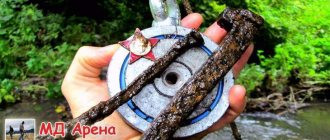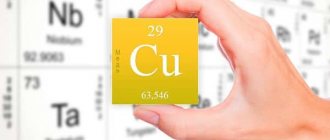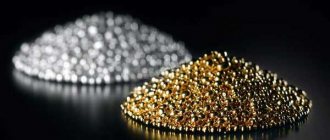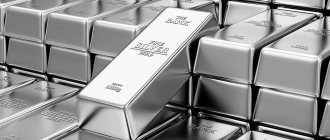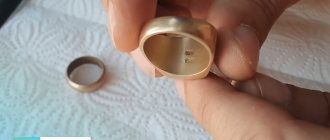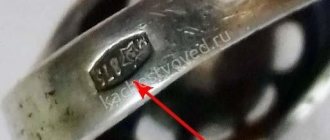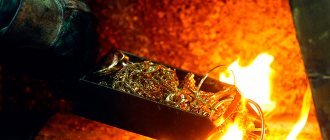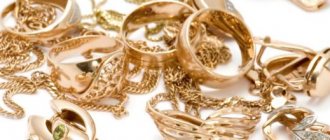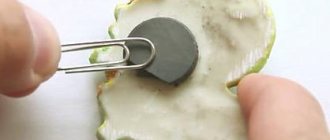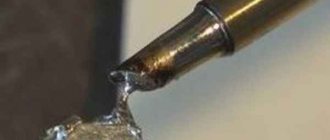Magnetic field and metals that conduct it
At the macroscopic level, under the influence of a magnetic field, some substances can be attracted. This also applies to metals and alloys. When hanging a new magnet on the refrigerator, many people don’t even think about why it doesn’t fall off. The most attracted metal is iron, which is used in alloy with other metals in the production of refrigerators. Now try attaching a gold ring or chain to this magnet. In this case, the gold product will not hold up. If you perform this trick with a silver item, you will get a similar result. Gold reacts worse to a search magnet than silver, since the latter contains more impurities.
The things that we used to call gold and silver are not actually made of mono-metal, they are alloys. They could “stick” to the magnet if it were larger, more powerful, if the alloy contained a pronounced metal that could be quickly attracted. To do this, consider the types of interaction of substances with a magnetic field.
Here are the main ones:
- Ferromagnets – strongly attracted (for example, iron, steel, nickel);
- Paramagnetic materials are weakly attracted (for example, platinum, aluminum, magnesium, oxygen). This effect can only be detected using special equipment.
- Diamagnets - magnetized against the direction of the external magnetic field and repelled by the magnet (for example, plastics, gold, silver, copper, water, carbon).
Having bought an ordinary magnet, you will only attract ferromagnets; in this case, you will have to forget about a treasure of gold. If you are determined to look only for products made of gold and silver, it is better for you to purchase a metal detector. It works on a different principle: it does not attract metals, but makes sounds when searching for them. Then all you have to do is dig in the right place. Decide what to buy so as not to throw money away and not be disappointed with the purchase.
Traditional methods of testing gold for authenticity
Changing the properties of metals is practiced only in the scientific community, but in jewelry it is customary to use real raw materials, which are tested using classical methods. When a product is exposed to a magnet, the result should be negative, i.e. the metal will not be magnetic. If the jewelry reacts even slightly to the magnetic field, it means that this is a fake or the amount of gold in the alloy is negligible.
As you can see, you can check whether the gold in front of you is real or fake in a fairly simple way, but not always. If unscrupulous manufacturers use aluminum or copper for manufacturing, the product will not respond to a magnet. In this case, you need to contact a specialist and conduct an examination.
Search magnets
To lift ferromagnetic metals and alloys from the bottom of rivers, ponds and wells, magnets F 200 – F 400 are used (depending on the difficulty of access and the size of the load). Even if they are the same size, the tearing force can be different, it depends on the content of neodymium (a chemical element). The more neodymium, the more powerful the magnet. For one person, a model with a diameter of up to 1 m and a lifting force of up to 300 kg will be optimal. It is important to know that flat objects attract better than round ones.
Sound authentication of gold coins and bars
This is a very old method of determining the authenticity of gold in coins and bars. It is based on the fact that each gold product has its own resonant frequency. Having sensitive hearing, you can recognize counterfeit money by the sound it makes. An example of using this method is illustrated in the 3-minute video on the right.
If you don’t rely on your own senses, you can use one of the appropriate mobile or computer applications that recognize fake gold coins by frequency resonance. The functionality of some models of Fisch testers includes the Ringer option, which helps to extract sounds from the products being tested. The disadvantage of this method is that it is not applicable to gold bars supplied in CertiPack packaging.
Safety precautions or what to be careful with
When using a magnet, you must adhere to certain rules:
- Neodymium should not be heated above 80°C.
- The magnet affects the magnetic fields of electrical devices, pacemakers, watches, credit cards.
- The large device is stored and transported in a non-magnetic, for example, plastic container.
- You cannot stand between a large magnet and an iron barrel/door, etc., it will be attracted, and a fracture of an arm/leg or other part of the body may occur.
- Wipe the device after each use, clean it from dirt, do not leave it without a case, and it will serve you for many years, since the device does not break down and does not require repair!
Have an easy search, precious finds and more gold!
Advantages and disadvantages
The indisputable advantage of a magnet is its ease of use:
- it does not require special storage conditions; you should, perhaps, avoid heating it above 80 degrees;
- does not need recharging;
- has a very simple design;
- takes up little space.
The disadvantage is that it cannot be used to extract gold, silver, and their alloys, including nuggets.
Another thing is metal detectors. The advantage of modern metal detectors is their ability not only to find, but also to distinguish which metal is within its coverage area. How does this feature work? This was made possible thanks to the use of a computer in the design of the device, which analyzes all incoming signals, reacting to the smallest changes.
Search magnets for gold and silver: operating principle, review of models and prices
Treasures, treasures, hiding places, jewelry... These words reek of adventure, adventurism, and romance.
Who didn't dream of finding treasures as a child?
Some adults have kept their childhood dreams and are making them come true by engaging in treasure hunting.
Like all passionate people, amateur search engines have their own clubs and communities. There they exchange experiences, discuss search devices, and make collective forays.
Modern devices for detecting metals help treasure hunters. One such device is a search magnet. More about it below.
Where can it be used?
Used to search for objects outside the field of view :
- in caves;
- mountain failures;
- wells;
- sewers;
- bodies of water;
- swamps.
A magnet will be a good help during archaeological excavations and searches for wartime items.
Usually used in tandem with a metal detector. Using a magnet, excess, unnecessary metal is collected, but which will be “distracted” when searching with a metal detector. The metal detector then searches for more valuable alloys such as gold and silver.
Objects that are made of metals that have ferromagnetic properties can be attracted by such a magnet. For example, cast iron or nickel.
Ferromagnetic properties are properties of base metals that allow them to “stick” to magnets with great force.
The burning question is, is it possible to lift objects made of precious metals using a magnet?
It is possible if the composition contains metals that react to magnetic attraction.
There is no special search magnet for gold and silver .
However, it is quite possible to obtain jewelry and coins made of precious alloys with its help, because they also contain other elements that the magnet will attract.
For example: 585 standard gold consists of 58.5 percent of gold. The remaining 41.5 percent comes from other metals, including nickel.
Nickel is easily attracted to a magnet. However, in order for such jewelry to be lifted, there must be a touch to the jewelry find.
It's the same story with silver. If the alloy has ligatures (metals added to jewelry to increase wear resistance), objects or jewelry will be attracted.
Differences from a metal detector
The fundamental difference is that a metal detector can only indicate the location of an object, while a magnet allows you to immediately “get” it. However, a magnet will not help when searching in the ground . Therefore, these two devices in the seeker’s arsenal are designed to complement each other, but not replace each other.
Other distinctive features:
- the magnet retains its functions in an aqueous environment ;
- no need to buy batteries or accumulators ;
- absence of sound signals that attract attention or “declassify” the seeker;
- do not take up much space, easy to take with you;
- objects are attracted on their own ;
- affordable price;
- resistant to damage;
- long service life, provided that the operating rules are followed - they lose one percent of their strength in a hundred years .
Search magnet for gold and silver and its properties
Typically, powerful magnets are designed to find precious metals. A search magnet reacts to gold and silver quite strongly, and although it is difficult to find them in their pure form, its power is enough to pick up jewelry and coins from the ground. The main goal of all search engines is treasures, expensive coins, and sometimes just ferrous metal.
The article will describe the structure of the magnet and the basic principle of operation. He will also figure out what exactly can be found with its help and how to find expensive alloys. It will be explained in detail what ferromagnets, paramagnets and diamagnetic materials are. In addition, valuable tips and recommendations will be given that will greatly simplify the search for valuable items.
Search magnet device
This device consists of a steel case, inside of which there is a neodymium magnet. It is made from a rare alloy containing neodymium, iron and boron. This compound has a powerful attractive property. Despite its compactness, it is capable of holding things tens of times its own weight.
To make it easier to get various things, the case is equipped with a special mount. It is screwed into the magnet body via a thread. On top of the fastener there is a fastener in the form of a hook or loop that will hold the cable or rope. This mount has a rigid base that is firmly screwed into the body. The entire structure has a reliable foundation, and in this case, there is no fear in lifting any expensive and heavy thing.
What items can be found
When asked what kinds of things can be found using a search magnet, iron objects, including coins, immediately come to mind. Almost all paramagnetic metals can be found. Simply put, materials that are attracted to the magnet body, but more on that later. Such coins, or precious metals, can be of great value. For example, you can find iron coins from the period of Tsarist Russia, as well as many rare Soviet coins.
Powerful magnets can attract metals such as:
- aluminum
- copper
- tin
- brass
- lead
Most searches are carried out in attics, in various beaches and public places where people can lose things, as well as in wells and pits. In such places they usually find costume jewelry, expensive jewelry, various metal boxes, and sometimes even expensive mobile devices (on the beach). This is what finding things on land is all about.
As for water, you can also find many valuable things, including gold jewelry. Also, thanks to superstitions, a whole fortune of coins can be raised from the bottom. Moreover, there is no need to get coins from city fountains, since there are quite a lot of abandoned wells that no one needs, but they store precious things.
Does a magnet attract gold and silver?
Is it possible to find pure gold or silver with powerful magnets? No, since such metals are diamagnetic, that is, they are not attracted to magnets. But it's not all bad, thanks to all the power of neodymium alloy, it is possible to get some jewelry. Such objects usually have a ligature in them.
This alloy helps precious metals such as gold or silver acquire certain properties. For example, silver jewelry does not darken as much, but gold jewelry is more durable. But the most important thing is that the ligature allows magnetization and makes it possible to find various alloys.
But it is also possible to find pure gold or silver. At the beginning of the article it was said that iron boxes can be found. Typically, jewelry made of gold or silver is stored in such cases. So, walking through an attic or similar places, you can get rich, in the literal sense of the word.
Magnetic properties of various metals
In order to go hunting for valuable metals, you need to know what exactly will be attracted to a magnet. Since metals have different magnetic properties, and some do not have them at all. They can be divided into three groups:
- ferromagnets
- paramagnets
- diamagnetic materials
Ferromagnets are metals with some of the best magnetic properties. Such metals are highly magnetic. These include ferrous metal.
Paramagnetic materials have the usual properties; they are readily attracted to a magnet, but do not have the function of magnetization. These include some alloys of jewelry and several types of non-ferrous metals.
And finally, diamagnetic materials. Such alloys are extremely difficult to respond to magnetic fields and greatly complicate the search for truly precious things. Diamagnets include gold, silver, aluminum, patina and other metals that even the strongest magnet does not pick up.
